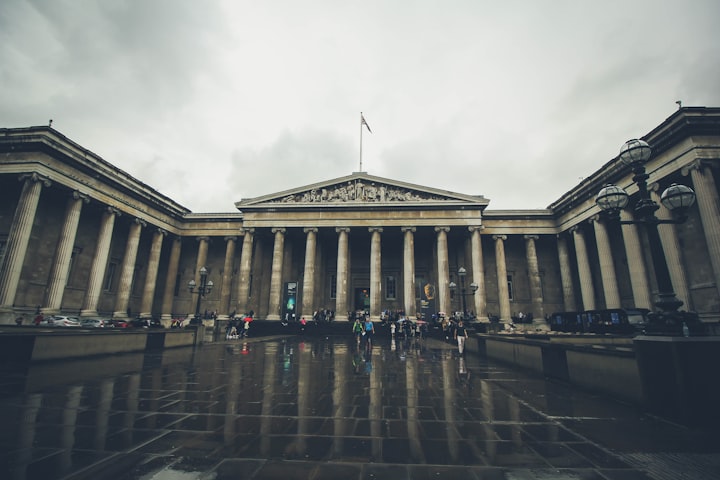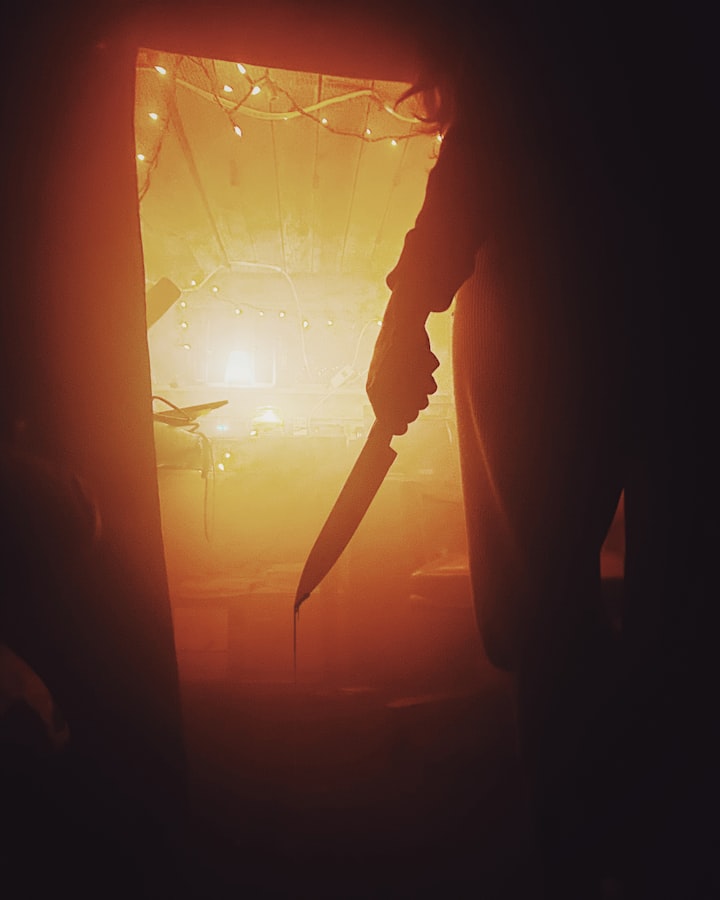10 Magnificent Ancient Artifacts Housing In The British Museum
A Museum With A Collection From Around The Globe

Founded in 1973 and opened in 1979, the British Museum is the first public national museum in the world. It is also among the most comprehensive, with over eight million items on display.
Sir Hans Sloane, an Anglo-Irish physician and former president of The Royal Society, owned the first artifacts exhibited. He bequeathed over 71,000 items from his personal collections to England when he died in 1953. His death helped give birth to the British Museum.
Over the next 269 years, the museum amassed collections from across the globe. Some were gifts and donations from individuals and organizations, while others were acquired through purchase or excavation.
With the astounding number of objects the institution owns, how did we choose just 10 magnificent ancient relics? It is all about the story behind each piece.
Below is our list of the 10 most interesting archaeological remnants housed at the British Museum.
The Rosetta Stone
Considered one of the British Museum’s most important objects, the Rosetta Stone is key to understanding Egyptian hieroglyphs. It is controversial, too, as two other countries claimed the world’s most famous rock as their own.
The artifact is a broken slab of a large stone. On it are three types of writing—hieroglyphs, Demotic, and Ancient Greek—which scholars in the 1800s pored over to translate. Jean-Francois Champollion won the translation race in 1822. He discovered that the Rosetta Stone carries a copy of a decree affirming support for King Ptolemy V (204-181 BC).
French soldiers unearthed the Rosetta Stone while digging to make a fort in the town of Rashid (Rosetta) in Alexandria on July 15, 1799. At that time, Egypt was under French rule, which didn’t last long because the British invaded the country in 1801. That was how the Rosetta Stone came into the hands of the British.
In modern times, the Egyptian government asked to have the rock repatriated to the country. In response, the British government gave Egypt a replica of the Rosetta Stone, which is on display in Rashid.
The Piranesi Vase
The Piranesi Vase is a restoration project of 18th-century artist and antiquarian Giovanni Battista Piranesi. The British Museum curator calls the vase one of the most ambitious restoration projects of the Piranesi workshop.
Piranesi is known for his imaginative and inventive creations. He fabricated the vase as a Roman antique to decorate English homes. It wasn’t an antique then, but it certainly is now. Made of marble with three legs and a triangular base, the frieze is described as a painstakingly accurate restoration of vintage satyrs.
The object made its way to England when Sir John Boyd, director of the East India Company, bought it in Italy in 1776. The British Museum purchased it in 1868. From 1955 to 1976, the vase was on display at Kensington Palace. It is currently at the Enlightenment Gallery of the British Museum.
The Sutton Hoo Ship Burial Helmet
The helmet is just a part of one of the most amazing medieval grave discoveries in Europe. In 1939, archeologist Basil Brown and his team discovered an Anglo-Saxon burial site estimated to be 1,400 years old. Among the funerary monument’s contents was an entire 27-meter ship.
Experts couldn’t tell if a body was buried there or whether the discovery was a cemetery or a monument. However, they were certain it was built for somebody important, perhaps a king. The assumption was made based on the objects found inside the ship: a sword, high-quality treasures, military equipment, textiles, and the exquisite Sutton Hoo helmet.
The headpiece’s mask forms a dragon with the eyebrows as its wings and the mustache as its tail. Its wing-eyebrows were lined with garnets, too. This artifact is on display at the Sir Paul and Lady Ruddock Gallery of the British Museum. You can also learn about the Sutton Hoo Ship burial from The Dig, a Netflix film
The Parthenon Sculptures
This assemblage comprises 247 feet of the original Parthenon frieze, 17 pedimental figures, and 15 metopes. They are marble sculptures that originated from the temple of Athena at the Acropolis of Athens between 447 and 432 BC.
By the 1800s, the Parthenon was nothing more but ruins after experiencing structural damages over the last two millennia. Around that time, the Ottoman Empire permitted British Ambassador Lord Elgin to remove sculptures from the site, most of which are now in the British Museum.
Since Greece won independence from the Ottoman Empire in 1832, it has been disputing the British Museum’s claim over how the Parthenon Sculptures reached British soil.
Hoa Hakananai’a
Easter Island, a volcanic island in the remote parts of Polynesia, is a special territory of Chile. It is known for its moai (monoliths of human figures), and the Hoa Hakananai’a is one of the hundreds made on the island. Most of these stone sculptures were carved from volcanic tuff, but the Hoa Hakananai’a and 13 others were made from basalt.
Research states that moai creation happened between 1100 and 1600. The Hoa Hakananai’a is said to be made in the 1200s. A British crew took the 2.42-meter moai from Orongo in 1868 and brought it home. The 4.2 metric ton weight did not stop them from taking the Rapa Nui treasure to be presented as a gift to Queen Victoria.
Assyrian Lion Hunt Reliefs
The lion may be the king of the jungle but it could not defeat the last great Assyrian king Ashurbanipal. At least, that is what you will see from the Assyrian Lion Hunt Reliefs, which are believed to have been commissioned between 645 and 635 BC.
These friezes signify the king’s duty to protect his people, showing Ashurbanipal hunting lions and ultimately killing them. It is a testament to the greatness of one of Assyria’s longest-reigning kings.
The Standard Of Ur And Artifacts From Mesopotamia
This Sumerian relic is a box embellished with mosaic scenes on all four sides. The pieces are made of red limestone, lapis lazuli, and shell.
One side shows a typical Sumerian war scene: the army charging the enemy, naked and wounded captives, and prisoners facing a large person with guards. The opposite side features men bringing fish and other animals to a banquet with a singer and lyre player. Its triangular side panels depict other Mesopotamian scenes.
This box came from the city of Ur and is believed to be made in 2500 BC. It was excavated with other artifacts from the Royal Cemetery of Ur in Southern Mesopotamia (present-day Iraq).
Aztec Double-Headed Serpent
Composed mostly of turquoise, this wood carving came from Aztec Mexico. According to historians, the piece was used in religious ceremonies, either worn or displayed. The Mexica, rulers of the Aztecs, venerate snakes because of their power. Multifaceted creatures are said to bridge the underworld, water, and the sky.
This Aztec double-headed serpent was carved from cedar wood, which also serves as its base. A turquoise mosaic decorates the front and heads, while its fangs are made from Strombus shells, and the gums and nostrils are red thorny oyster fragments. The British Museum dates the serpent’s creation between 1400 and 1521.
The Vindolanda Tablets
Among the oldest handwritten documents in history, the Vindolanda Tablets were discovered in 1973 in northern England. Vindolanda was the Roman Auxiliary Fort from the 1st to the 2nd centuries AD. The fort excavation yielded around 1,000 wooden writing tablets. The writings were mostly military-related messages, although there were also some personal notes to and from families and slaves.
One of the most notable notes was a birthday party invitation in 100 AD, which historians say is the oldest surviving Latin document written by a woman. This invite was addressed to Sulpicia Lepidina, the wife of commander Flavius Cerealis.
The Ife Head
Nigeria’s Yoruba people believe that the city of Ife is sacred because it was founded by God and is the birthplace of humanity.
It was in this city where brass head sculptures, aptly called Ife Heads, were found. One of them is now on display at the British Museum. This head was discovered in 1938 by accident during a house construction. Sixteen more were excavated around the area.
The museum’s Ife Head is just shy of being life-size, with a headdress which historians interpret as a crown. Its production date was pegged between the 14th and 15th centuries. Because of the prejudice that African art is primitive, the discovery holds a special significance. These Ife Heads are considered among Africa’s highest achievements in art and culture.
Around The World At The British Museum
Around 1.3 million people visit the British Museum every year, placing it among the top museums in the world. With millions of artifacts spread around 94 galleries, it boasts a comprehensive and impressive collection that chronicles human evolution and highlights customs from around the world.
About the Creator
Keren Dinkin
| Qualified copywriter with seven years of work experience |
When I'm not at my desk whipping up compelling narratives and sipping on endless cups of coffee, you can find me curled up with a book!





Comments
There are no comments for this story
Be the first to respond and start the conversation.